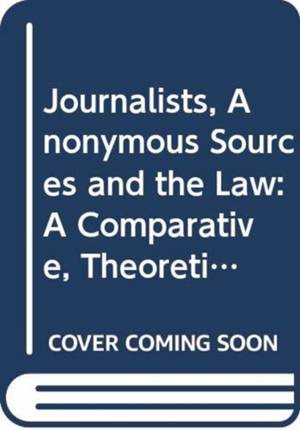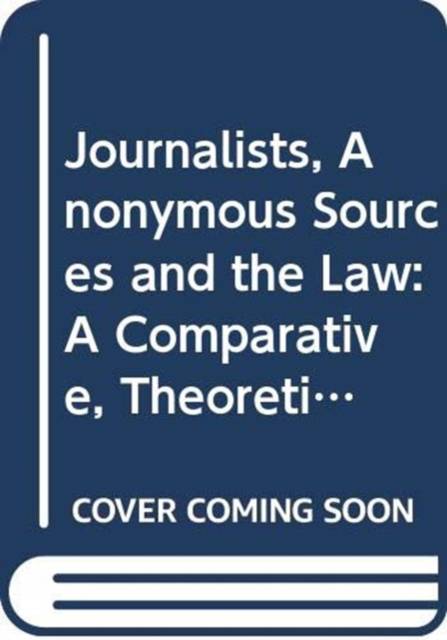
- Retrait gratuit dans votre magasin Club
- 7.000.000 titres dans notre catalogue
- Payer en toute sécurité
- Toujours un magasin près de chez vous
- Retrait gratuit dans votre magasin Club
- 7.000.0000 titres dans notre catalogue
- Payer en toute sécurité
- Toujours un magasin près de chez vous
Journalists, Anonymous Sources and the Law
A Comparative, Theoretical and Critical Analysis
Damian CarneyDescription
This book considers whether news gatherers should be required to disclose the identity of anonymous sources used in their stories by courts or other bodies. The vast majority of media self-regulatory codes impose an obligation not to disclose the identity of such sources, but many legal systems have traditionally been reluctant to offer such a degree of protection to anonymous sources, or any at all. However, the latter part of the twentieth century and early twenty-first century has seen an explosion in the number of such 'source protection' laws, and much judicial and legislative activity to change existing laws.
Drawing on media and communications theories the book identifies a number of different theoretical justifications for source protection laws and analyzes whether the application of existing laws are consistent with any of these theories. Using legal materials and codes from a wide variety of countries it considers whether there are any noticeable trends in how different countries address this issue. It explores the influence of the United States and the European Court of Human Rights' jurisprudence on the matter beyond their jurisdictions, and asks the question whether this is an area of law captured by 'globalisation, ' or whether countries with different constitutional and media traditions have developed different approaches to 'source protection.'
Finally having assess the arguments in support of source protection laws Damian Carney puts forward a model clause and model shield law for the protection of anonymous sources which is theoretically and practically robust.
Spécifications
Parties prenantes
- Auteur(s) :
- Editeur:
Contenu
- Nombre de pages :
- 256
- Langue:
- Anglais
- Collection :
- Tome:
- n° 11
Caractéristiques
- EAN:
- 9780415659611
- Date de parution :
- 29-02-24
- Format:
- Livre relié
- Format numérique:
- Genaaid
- Dimensions :
- 156 mm x 233 mm

Les avis
Nous publions uniquement les avis qui respectent les conditions requises. Consultez nos conditions pour les avis.






